A Multidisciplinary Contextualized Analysis of Select Passages From Genesis 2.0
Version 2.0 pre-print index
This is a pre-print collection of excerpts from an exhaustive personal study of most of the first 9 chapters of the book of Genesis. This is a vastly expanded effort from the original version that can currently be found here downloadable for free.
The purpose of this exercise is to compare a non-symbolic literal reading of the text to our current understanding of language, paleontology, and the physical sciences.
Constructive discussion on the merits of this study is encouraged!
Preface and Introduction
As we cannot all be experts on all things, some amount of faith is functionally necessary. However, faith is defined as belief apart from proof making it an automatic disqualifier for mastery of knowledge in any topic.
Analytical Considerations And Examples:
What would you know if you didn’t know what you now know?/The state of the ancient world
This is the first challenge of historical contextual analysis: Taking into account a realistic consideration of what the knowledge base of a person who lived more than 3,000 years ago might be.
A very brief view of cosmology in history
Although science is considered to be a fact-based discipline, progress has always been either driven or impeded by popular consensus. But even the scientific titans of the early 20th century believed the universe to be very different from what we accept as empirically true today.
Literary Structure/Divisions of chapter and verse/Progression of narrative scope
Among historical, scientific, and linguistic considerations, one must also consider the literary structure employed. However when compared to the literary patterns found throughout the rest of Genesis, there is a clear structure to the creation story which suggests a different interpretation.
The Peculiarities of Translation
For any document that claims to reflect reality or is otherwise based on facts, it should withstand scrutiny and ideally be further enhanced as more information is available. Just as our scientific understanding has evolved over the centuries with drastic changes in our beliefs regarding the nature of reality, so our reading of any historical document may be amended or corrected with new knowledge.
“Creatio ex potentia” ‘vs’ “creatio ex nihilo”
This principle of “creatio ex potentia” or “creation from potential” is reflected throughout the Bible. It is consistent with not only the various “Yamim” of creation, but how God formed Adam from dust in 2:7, and constructed Eve by repurposing a part of Adam described in 2:22a.
Time does not exist. Therefore, Free Will Does.
Although this interpretation may seem drastically different from common theological beliefs, it is logically coherent, aligning with a literal contextual reading of the Bible.
Analysis 1: The Yamim of Creation
Genesis 1:1-5 - Headnote and the first “Yom” (יום).
:1 is meant to be a headnote announcing the purpose of this section, not an event itself. To support this “headnote verse” interpretation, every creative action God takes throughout the first chapter of Genesis is declared before it occurs.
1:6 God said, "Let there be an expanse in the middle of the waters,"
“…and let it divide the waters from the waters." 7God made the expanse, and divided the waters which were under the expanse from the waters which were above the expanse; and it was so. 8God called the expanse "sky." There was evening and there was morning, a second
1:14 God said, "Let there be lights in the expanse of sky to divide the day from the night;
and let them be for signs, and for seasons, and for days and years; 15 and let them be for lights in the expanse of sky to give light on the earth;" and it was so. 16 God made the two great lights: the greater light to rule the day, and the lesser light to rule the night. He also made the stars.
1:9 God said, "Let the waters under the sky be gathered together to one place, and let the dry land appear;" and it was so.
10 God called the dry land "earth," and the gathering together of the waters he called "seas." God saw that it was good.
1:11 God said, "Let the earth put forth grass, herbs yielding seed, and fruit trees bearing fruit after their kind, with its seed in it, on the earth;" and it was so.
Approximate Year: 420 Ma
Historical Period: Devonian
Event: Earliest trees
1:20 God said, “Let the waters abound with living creatures, and let the “oph” (עוֹף) fly above the earth in the open expanse of the sky.”
One may be wondering why I’m discussing bugs when most translations of Genesis 1:20-21 mention birds. However, the Hebrew term “oph” (עוֹף) which is loosely considered to mean “bird” can refer to any flying creature.
1:24 God said, "Let the earth bring forth living creatures after their kind, livestock, creeping things, and animals of the earth after their kind;" and it was so.
Approximate Year: 65 Ma
Historical Period: Paleogene
Event: Grazing mammals
Geological evidence suggests that nearly all land animal species appeared after the end of the Cryogenian (or “snowball earth”) period of the Neoproterozoic Era.
1:27 God created man in his own image. In God's image he created him; male and female he created them.
Approximate Year: 0.2 Ma (200,000 BC)
Historical Period: Upper Pleistocene Epoch
Event: Anatomically modern man
Homo Sapiens, which is considered to be "anatomically modern man", appeared roughly 200,000 years ago. It was sometime after that date this era would have reached its end.
2:1 The heavens and the earth were finished, and all their vast array.
2 On the seventh day God finished his work which he had done; and he rested on the seventh day from all his work which he had done. 2:3 God blessed the seventh [era], and made it holy, because he rested in it from all his work of creation which he had done.
2:4 This is the history of the generations of the heavens and of the earth when they were created, in the [era] that Yahweh God made the earth and the heavens.
[This is an excerpt from a new edition I’m writing of a personal study of the book of Genesis, the first edition of which can be found here. The purpose of this exercise is to compare a close reading of the text to our current understanding of language, paleontology, and the physical sciences. Constructive discussion on the elements presented is always …
Analysis 2: The Formation of Adam
2:5 No plant of the field was yet in the earth, and no herb of the field had yet sprung up; for Yahweh God had not caused it to rain on the earth. There was not a man to till the ground,
6 but a mist went up from the earth, and watered the whole surface of the ground.
2:7 Yahweh God formed [Adam] from the dust of the ground, and breathed into his nostrils the breath of life; and [Adam] became a living soul.
[This is an excerpt from a new edition I’m writing of a personal study of the book of Genesis, the first edition of which can be found here. The purpose of this exercise is to compare a close reading of the text to our current understanding of language, paleontology, and the physical sciences. Constructive discussion on the elements presented is always …
2:9d and the tree of the knowledge of good and evil.
[This is an excerpt from a new edition I’m writing of a personal study of the book of Genesis, the first edition of which can be found here. The purpose of this exercise is to compare a close reading of the text to our current understanding of language, paleontology, and the physical sciences. Constructive discussion on the elements presented is always …
2:15 Yahweh God took the man, and put him into the garden (גַּ֥ן) of Eden to dress it and to keep it.
[This is an excerpt from a new edition I’m writing of a personal study of the book of Genesis, the first edition of which can be found here. The purpose of this exercise is to compare a close reading of the text to our current understanding of language, paleontology, and the physical sciences. Constructive discussion on the elements presented is always …
2:17b “for in the [yom] that you eat of it, you will surely die.”
[This is an excerpt from a new edition I’m writing of a personal study of the book of Genesis, the first edition of which can be found here. The purpose of this exercise is to compare a close reading of the text to our current understanding of language, paleontology, and the physical sciences. Constructive discussion on the elements presented is always …
2:22a Yahweh God made a woman from the rib which he had taken from the man
Bone marrow contains the best and most available sources of genetic material and growth cells in the human body. And considering the best sources of marrow are largely structural bones, a rib is probably the one of least consequence functionally and the simplest to extract medically without risk to the patient. This represents a viable approach to forming a clone of a subject or a variation with relatively limited genetic editing.
4:7 If you do well, won’t it be lifted up? If you don’t do well, sin crouches at the door. Its desire is for you, but you are to rule over it.”
[This is an excerpt from a new edition I’m writing of a personal study of the book of Genesis, the first edition of which can be found here. The purpose of this exercise is to compare a close reading of the text to our current understanding of language, paleontology, and the physical sciences. Constructive discussion on the elements presented is always …
Analysis 3: The Ark And The Covenant
7:3b to keep [their] seed alive on the surface of all the earth.
This verse is not about the retention of these animal species. As it was with Noah, it is about continuing the lineage of individual animals with whom God had a relationship.
The only place in the Bible where God is known to have directly interacted with animals are with the ones He formed in the garden.
An 8,766 hour tour
It is interesting to note that the scientifically measured time it takes for the Earth to travel around the sun is 365.26 days. The start of the flooding until God ordered Noah to exit the Ark is described as being exactly a solar year.
(months difference 29.53) +( day difference) + 1 =Flood to debarkation
(12 29.53) +(27-17) + 1 =365.36 days













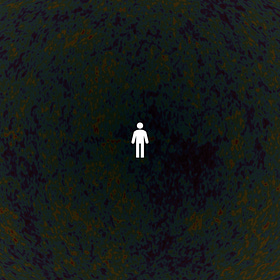


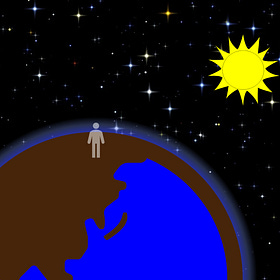
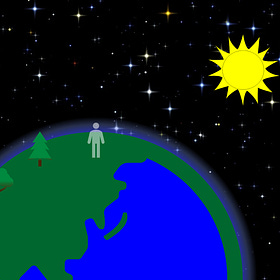
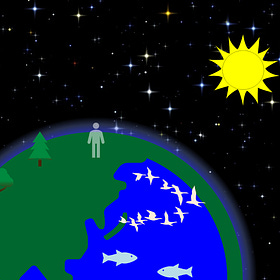
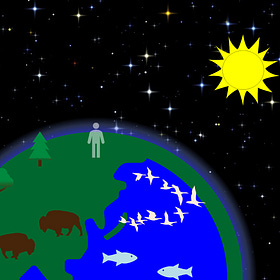
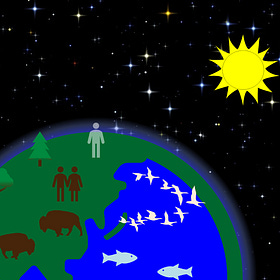

![2:4 This is the history of the generations of the heavens and of the earth when they were created, in the [era] that Yahweh God made the earth and the heavens.](https://substackcdn.com/image/fetch/$s_!XyHB!,w_280,h_280,c_fill,f_auto,q_auto:good,fl_progressive:steep,g_auto/https%3A%2F%2Fsubstack-post-media.s3.amazonaws.com%2Fpublic%2Fimages%2F3c94ca6a-a4a7-4e27-9cf0-0f69419e56e7_1024x1024.png)

![2:7 Yahweh God formed [Adam] from the dust of the ground, and breathed into his nostrils the breath of life; and [Adam] became a living soul.](https://substackcdn.com/image/fetch/$s_!CqAu!,w_280,h_280,c_fill,f_auto,q_auto:good,fl_progressive:steep,g_auto/https%3A%2F%2Fsubstack-post-media.s3.amazonaws.com%2Fpublic%2Fimages%2F19b8502e-26e2-49fb-84a4-5d94bcbc8d7b_1024x1024.png)
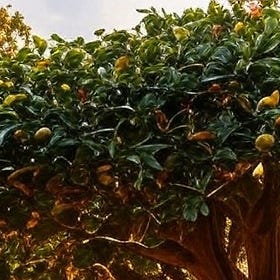

![2:17b “for in the [yom] that you eat of it, you will surely die.”](https://substackcdn.com/image/fetch/$s_!0b80!,w_280,h_280,c_fill,f_auto,q_auto:good,fl_progressive:steep,g_auto/https%3A%2F%2Fsubstack-post-media.s3.amazonaws.com%2Fpublic%2Fimages%2F57d0a084-98c8-4c88-9149-04a0113646a3_1024x768.jpeg)


![7:3b to keep [their] seed alive on the surface of all the earth.](https://substackcdn.com/image/fetch/$s_!TdNA!,w_280,h_280,c_fill,f_auto,q_auto:good,fl_progressive:steep,g_auto/https%3A%2F%2Fsubstack-post-media.s3.amazonaws.com%2Fpublic%2Fimages%2F19ec49b7-565c-49b3-9b54-66f3a2b1c846_2048x2048.png)
